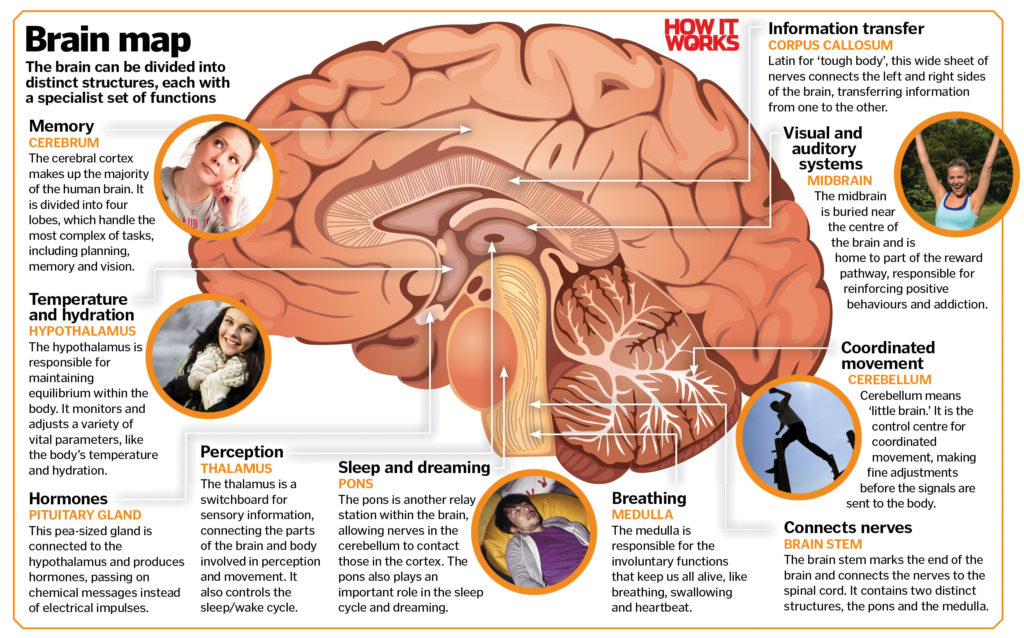The Single Strategy To Use For The Power of Imagination: How Different Regions of the Brain Collaborate to Fuel Creativity

Mapping Innovation: Understanding the Neural Pathways of the Creative Mind
Creative thinking is a phenomenon that has captivated experts, performers, and thinkers throughout record. It is the potential to produce brand new ideas, fix problems in ingenious methods, and produce original works of craft. But what goes on inside the mind when we are being innovative? How do our neural paths provide to this process? In this blog article, we will certainly discover the concept of mapping innovation and dig into the interesting world of the creative thoughts.
The individual mind is a intricate system of billions of connected cells phoned neurons. These neurons interact with each various other with power instincts and chemical indicators, forming elaborate pathways known as neural systems. It is within these networks that creativity takes form.
Neuroscientists have long been examining how different regions of the mind provide to imaginative thinking. brainhealthandpuzzles.com that has acquired significant focus is the prefrontal peridium, which participates in a important part in much higher intellectual functionality such as problem-solving, decision-making, and creative imagination. Studies have revealed that damage to this region can badly impair a individual's ability to assume artistically.

One more crucial gamer in creativity is the nonpayment mode network (DMN), a set of brain regions that ended up being energetic when our minds are at remainder or interacted in casual thought. The DMN has been revealed to be entailed in producing tips, fancy, and helping make hookups between apparently unrelated concepts – all important elements of innovative thinking.
Current developments in neuroimaging techniques like functional magnetic resonance image resolution (fMRI) have permitted researchers to map out these neural paths affiliated along with innovation more specifically. Through scanning participants' brains while they involve in various innovative jobs such as drawing or brainstorming, scientists may recognize which regions are much more active throughout these activities.
One research study administered through researchers at Stanford University intended to discover how different types of ingenuity switch on distinct neural systems. Participants were asked to complete activities involving either imaginative imagination (e.g., drawing) or variant thinking (e.g., happening up along with numerous answers to a problem). The end result presented that imaginative innovation largely interacted the visual and electric motor areas of the human brain, while variant thinking activated locations linked with cognitive management and attention.
Surprisingly, investigation has also presented that particular variables can easily affect the neural paths of creative thinking. For instance, researches have located that mood can easily affect innovative thinking. Good emotions like joy and happiness and pleasure have been shown to boost artistic problem-solving potentials, while damaging emotions like misery or rage can prevent them. This suggests that the state of our psychological well-being directly has an effect on how our human brains involve in artistic procedures.
Additionally, experts have discovered that specific individuals possess what is recognized as "enhanced imagination." These individuals exhibit a higher degree of divergent thinking and are more likely to come up along with authentic concepts reviewed to others. Neuroimaging researches on these very innovative people have disclosed building and useful distinctions in their brains contrasted to those along with common or below-average innovation. These seekings advise that there might be a genetic element at play in identifying one's imaginative potentials.
Understanding the neural paths of imagination not simply gives important insights right into how our minds function but also has actually sensible ramifications. Through acquiring a far better understanding of how creative thinking unfurls in the brain, we may be able to establish methods to improve it even further. This understanding might help a broad variation of fields such as education and learning, innovation, and therapy for individuals along with imaginative clogs.
In final thought, mapping creative thinking involves unraveling the ornate nerve organs paths within our minds that add to this exceptional phenomenon. Studying these pathways may aid us understand the rooting devices responsible for individual ingenuity and dropped light on why some individuals are much more inherently creative than others. Through delving deeper into this amazing subject matter, we may open new ways of nurturing and encouraging imagination in ourselves and others.
References:
1. Dietrich A., & Kanso R.. (2010). A review of EEG, ERP, and neuroimaging studies of creativity and knowledge. Emotional Bulletin, 136(5), 822–848.
2. Jung, R. E., & Vartanian, O. (2018). The Cambridge Handbook of the Neuroscience of Creativity. Cambridge University Press.
3. Takeuchi H., et al. (2010). Local gray issue amount of dopaminergic unit affiliate along with innovation: Documentation coming from voxel-based morphometry; Human Brain Mapping, 31(3), 398-409.
4. Ueda Y., et al. (2019). Neural Correlates Underlying Mood Effects on Artistic Thinking: Proof from an fMRI Study; Frontiers in Human Neuroscience, 13, 1-12.
